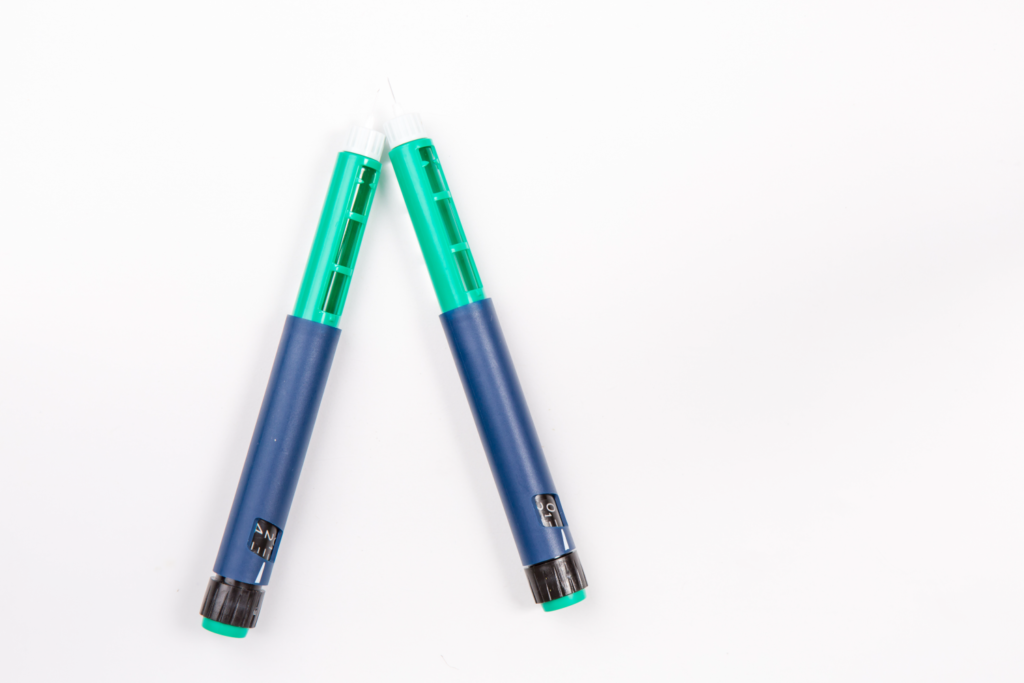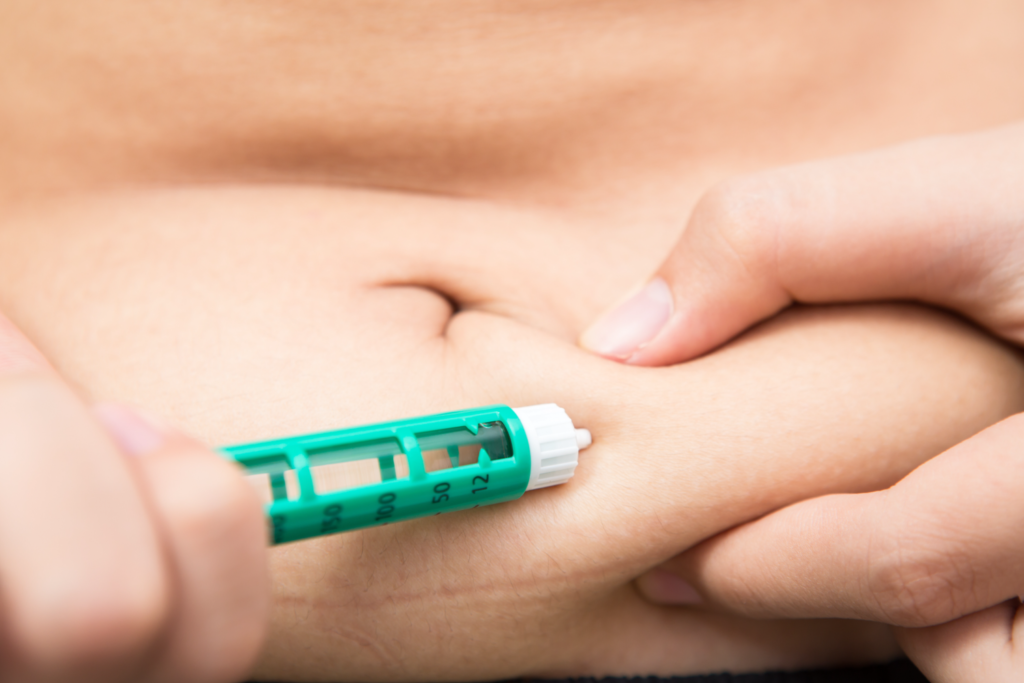Published by Dr. Brandon Richland, MD

Mounjaro, known generically as tirzepatide, marks a significant advancement in the treatment arsenal for type 2 diabetes, a chronic condition affecting millions worldwide. Approved by the FDA, this injectable medication works by emulating natural hormones to lower blood sugar levels and often assists with weight management.
As with all pharmaceuticals, understanding the potential side effects is crucial for patients and healthcare providers to ensure safe and effective treatment.
Key Takeaways of Mounjaro Side Effects
- Consult an expert Healthcare Provider or licensed Medical Weight Loss Doctor before starting Mounjaro, especially if you have certain pre-existing medical conditions.
- Stay informed about 2025 updates on Mounjaro’s safety, other known side effects, and the latest guidance on side effect management.
- Mounjaro is FDA-approved for type 2 diabetes and may aid in weight loss.
- It can cause a range of side effects, from nausea to severe conditions like thyroid tumors.
- Safe use of Mounjaro involves awareness of its potential side effects and proper monitoring.
Understanding Mounjaro
Mounjaro, scientifically known as tirzepatide, represents a significant development in diabetes treatment. Approved by the Food and Drug Administration (FDA), this diabetes medication is designed to improve blood sugar control in adults with type 2 diabetes.

Pharmacology
Mounjaro functions as a dual glucose-dependent insulinotropic polypeptide (GIP) and glucagon-like peptide-1 (GLP-1) receptor agonist. The involvement of GLP-1, a hormone that stimulates insulin release, is critical in managing blood sugar levels.
The unique mechanism of Mounjaro allows it to effectively lower blood glucose by enhancing insulin secretion and slowing gastric emptying. This helps in reducing the amount of glucose that’s released into the bloodstream after a meal.
Usage and Indications
Tirzepatide is indicated for adults with type 2 diabetes to improve blood sugar control as an adjunct to diet and exercise. It is not recommended for treating type 1 diabetes or diabetic ketoacidosis. Mounjaro is typically prescribed when other diabetes medications have not provided sufficient blood sugar control.
It is available as a subcutaneous injection and is often highlighted for its once-weekly dosing schedule, which may improve patient adherence. The FDA’s endorsement underscores its efficacy and safety profile for the indicated patient population.
Common Mounjaro Side Effects
Mounjaro is known to cause several side effects, most of which are connected to the digestive system and appetite.
Gastrointestinal Issues
One of the more frequently reported side effects of Mounjaro is gastrointestinal discomfort. Patients often experience nausea and diarrhea, which can be inconvenient and sometimes distressing. Constipation and abdominal pain are also not uncommon.
Symptoms like gas and indigestion could indicate the body’s adjustment to the medication. When one complains of stomach pain after taking Mounjaro, it’s typically a sign that the medication is affecting the gastrointestinal tract.
Appetite Changes
A notable effect of Mounjaro is its impact on a patient’s appetite. Reports of decreased appetite can be quite common. While some patients might welcome this side effect for weight management purposes, it’s essential to monitor food intake to ensure adequate nutrition is maintained.
Mounjaro Serious Side Effects
Mounjaro, while beneficial for certain conditions, may also lead to serious side effects that warrant immediate medical attention if it is not supervised by a healthcare expert. Careful monitoring and immediate consultation with healthcare providers are advisable if any severe symptoms occur.
Endocrine Disorders
Mounjaro use has been associated with an increased risk of thyroid tumors, including medullary thyroid carcinoma (MTC). It is important for patients with a personal or family history of thyroid cancer or multiple endocrine neoplasia syndrome type 2 to avoid using Mounjaro, due to the risk of thyroid cancer. Mounjaro has a boxed warning for the risk of this serious side effect. Cases of pancreatitis have also surfaced, necessitating vigilance for symptoms like severe abdominal pain.
Severe Allergic Reaction
Occasionally, Mounjaro may trigger severe allergic reactions such as anaphylaxis, which can manifest as difficulty breathing, significant rash, and a drop in blood pressure. Patients who experience a more severe allergic reaction should seek emergency medical care immediately.
Cardiovascular and Kidney Concerns
Although less common, there have been instances of Mounjaro leading to acute kidney injury, especially in patients with preexisting kidney conditions or those taking medications that affect kidney function. Signs of trouble may include a decrease in urine output or swelling in the extremities.
Additionally, while not directly affecting the heart, Mounjaro-related hypoglycemia can cause cardiovascular strain in patients with heart disease or those taking insulin or insulin secretagogues.
Patients should be informed about these potential adverse effects and encouraged to report any unusual symptoms or concerns to their healthcare provider.
Managing Side Effects
When patients experience side effects from Mounjaro, specific strategies can help mitigate them. The approach involves a combination of diet and lifestyle adjustments along with possible medical intervention to manage symptoms effectively.
Diet and Lifestyle Adjustments
Adjusting one’s diet can significantly impact the management of Mounjaro side effects, especially those related to the stomach. Patients may find that incorporating certain foods:
- High in fiber: To counteract symptoms like constipation and maintain gastrointestinal health.
- Hydration: Increasing water intake can help with both hydration and alleviating stomach issues like constipation and indigestion.
- Avoiding irritants: Limiting alcohol can prevent worsening side effects like dehydration and gastrointestinal discomfort.
Lifestyle changes also play a critical role. They might include:
- Regular exercise to improve overall digestive health.
- Smaller, more frequent meals to ease the burden on the digestive system.
Medical Intervention
In some cases, diet and lifestyle adjustments may not suffice, and medical intervention becomes necessary. Here’s what that could entail:
- Consulting a pharmacist or physician about over-the-counter remedies for symptoms like nausea and indigestion.
- Prescription medications could be an option for more severe cases that these measures don’t address.
Patients should always talk to their healthcare provider before implementing any changes to manage side effects.
Mounjaro Dosage and Administration
Before beginning treatment with Mounjaro, it’s essential to understand the correct dosage, as well as proper injection techniques, to ensure effectiveness and safety. Mounjaro is administered once a week using a subcutaneous injection, and dosing depends on individual patient needs.

Determining the Correct Dosage
For most patients, Mounjaro treatment starts with a lower dosage and may be adjusted based on their response to the medication and glycemic control.
The initial dose is typically 2.5 mg once a week. After at least four weeks, if needed, the dosage can be increased to 5 mg, and subsequently to 7.5 mg, 10 mg, 12.5 mg, or a maximum of 15 mg once a week. Physicians will consider the patient’s underlying health conditions, concurrent medications, and response to treatment when adjusting doses.
It’s important for patients to adhere to the prescribed frequency of once weekly and not to alter the dosage without consulting their healthcare professional.
Missing a dose within 48 hours allows the patient to take it as soon as they remember. If more than 48 hours have passed, patients should skip the missed dose and take the next dose on the regularly scheduled day.
Injection Techniques
Mounjaro can be injected into the thigh, upper arm, or abdomen. Patients are instructed to rotate injection sites to reduce the risk of injection site reactions. They should cleanse the intended area with alcohol and insert the needle at a 90-degree angle.
- Injection Site Rotation: It is recommended to use a different site each time to reduce the potential for irritation or reaction.
- Avoiding Injection Site Reactions: If patients experience reactions at the injection site, they should consult their healthcare provider for advice on symptom relief and injection technique adjustment.
- Important Considerations: Mounjaro is not insulin and should not be mixed with insulin in the same injection. If a patient is on insulin therapy, different injection sites should be used for insulin and Mounjaro administrations.
Special Considerations
When considering the use of Mounjaro, certain groups of individuals need to be aware of potential unique risks and interactions to avoid any medical emergency. This includes those who may become or are pregnant, and those who are taking other medications that could interact with tirzepatide, the active ingredient in Mounjaro.
The medication should not be used by individuals with a personal or family history of medullary thyroid carcinoma or by those with multiple endocrine neoplasia syndrome type 2. The risk of developing thyroid cancer, particularly thyroid C cell tumors, adds another layer of caution, highlighting the importance of communication with healthcare providers before using Mounjaro.
Use During Pregnancy
It’s important for individuals who are pregnant or may become pregnant to consult with their healthcare provider to weigh the potential benefits and risks of using this medication during pregnancy.
Interactions with Other Medications
Individuals should be aware that Mounjaro can interact with other medications they might be taking, potentially altering its effectiveness or increasing risks of side effects. One notable interaction is with sulfonylureas, a class of medications used to manage diabetes.
Using Mounjaro in conjunction with sulfonylureas may require a modification of dosage to avoid hypoglycemia, a condition characterized by abnormally low blood glucose levels.
Monitoring Treatment Efficacy
When a patient begins treatment with Mounjaro, healthcare providers closely monitor its efficacy by evaluating various metrics:
- A1C Levels: A critical measure for patients with type 2 diabetes is the A1C level, which reflects average blood sugar levels over the past two to three months. A significant decrease in A1C can indicate effective treatment.
- Fasting Glucose Levels: Regular checks of fasting blood glucose give an immediate snapshot of blood sugar control. Patients and healthcare providers can observe changes and trends responding to Mounjaro therapy.
- Weight Metrics: Given that Mounjaro is associated with weight loss, tracking changes in weight helps gauge the drug’s impact on body weight over time. This is an essential factor for many individuals with type 2 diabetes, as weight management can be a crucial part of controlling the condition.
These objective data points assist healthcare providers in assessing how well Mounjaro is working for the patient and whether to adjust dosages or explore alternative treatments.
They ensure that both the benefits and the potential side effects are weighed to achieve the best possible therapeutic outcome.
Additional Information
It’s important for patients to understand the depth of scientific evidence supporting their treatment and the resources available to assist them.
Clinical Trials and Research
Mounjaro’s approval is grounded in substantial clinical trial evidence that has carefully assessed its safety and efficacy.
Researchers in these trials looked at various aspects of the medical condition it aims to treat, type 2 diabetes, and evaluated the drug’s impact on glucose control.
Access and Support Programs
Patients prescribed Mounjaro have access to support programs to help them manage the costs and logistics of their treatment.
These resources often provide educational materials about the medical condition, financial assistance, and strategies for adherence to the prescribed regimen.
Frequently Asked Questions About Mounjaro Side Effects
1. What Possible Impacts Does Mounjaro Have on Thyroid Function?
Patients are often concerned about thyroid function when taking new medications. Clinical studies suggested that Mounjaro does not have a direct impact on thyroid function. However, patients with a history of thyroid disease should consult with their healthcare provider for personalized advice.
2. Can Mounjaro Use Lead to Increased Burping?
While burping has been reported as a potential side effect, it is a less common gastrointestinal symptom associated with Mounjaro compared to other symptoms like nausea or indigestion.
3. Are There Any Consistent Patterns in User Experiences with Mounjaro Side Effects?
Many users have reported gastrointestinal issues such as nausea and diarrhea. It’s important for patients to monitor their reactions and report any concerning or persistent side effects to their doctor.
4. What Kind of Headaches Might Be Experienced When Taking Mounjaro?
Some individuals might experience mild to moderate headaches during the initial stages of Mounjaro treatment, which often subside as the body adjusts to the medication.
5. Should I Expect Body Aches As a Side Effect of Mounjaro, and How Severe Can They Be?
Body aches are not commonly reported as a side effect of Mounjaro. However, patients who do experience aches typically report them as mild. Any severe or persistent discomfort talk with your doctor.

Conclusion and Summary of Mounjaro Side Effects: What to Expect and How to Manage Them
While Mounjaro offers promising benefits for managing blood sugar levels and aiding weight loss, it’s essential to recognize and address potential side effects.
Patients prescribed Mounjaro should remain vigilant for mild symptoms such as upset stomach or mild allergic reactions. However, more severe digestive problems, low blood sugar levels (hypoglycemia), or even life-threatening allergic reactions can occur, necessitating immediate medical attention.
Missing doses or consuming alcohol while on Mounjaro can exacerbate these risks. Thus, it’s crucial for patients to adhere strictly to their prescribed regimen and consult their doctor or pharmacist promptly if any concerning symptoms arise.
Ultimately, the decision to prescribe Mounjaro should involve a careful assessment of individual health conditions and potential drug interactions, ensuring the most effective and safest treatment plan for each patient.
Please note that this article is intended for informational purposes only and should not be construed as medical advice. Before making any changes to your treatments, please consult with your healthcare provider to discuss the appropriateness and safety of such changes.
Ready For Your First-Class Cosmetic Experience in Orange County (OC) California (CA)?
Are you located in one of these Orange County (OC) / Southern California cities?
Aliso Viejo, Anaheim, Brea, Buena Park, Costa Mesa, Coto de Caza, Cypress, Dana Point, Fountain Valley, Fullerton, Garden Grove, Huntington Beach, Irvine, La Habra, La Palma, Laguna Beach, Laguna Hills, Laguna Niguel, Laguna Woods, Ladera Ranch, Lake Forest, Los Alamitos, Mission Viejo, Newport Beach, Orange, Placentia, Rancho Santa Margarita, San Clemente, San Juan Capistrano, Santa Ana, Seal Beach, Stanton, Tustin, Villa Park, Westminster, or Yorba Linda?
Plastic Surgeon Dr. Brandon Richland, MD and our Cosmetic Aesthetics Team are ready to help you look and feel your absolute best.
Elevate your confidence and self esteem levels to unfathomable new heights!
Schedule your in-person consultation in our modern and luxurious offices in either Fountain Valley, CA (Main HQ) or our Newport Beach, CA office.
Do you live outside of Southern California or short on time? For your convenience, Virtual Consultations are also available.
Our warm and engaging Team of carefully selected Aesthetics Professionals will make you feel calm, cool, collected, and right at home throughout your entire consultation and surgery process.
Schedule Your Aesthetics Consultation here, or call us directly at 949-867-4496 today.
About the Author

Dr. Brandon Richland, MD is a respected Board Certified Licensed Plastic Surgeon in Orange County / Southern California specializing in cosmetic and reconstructive surgeries.
Driven by his passion for medicine, Dr. Richland obtained his Doctor of Medicine (M.D.) degree from the prestigious program at Saint Louis University (SLU) School of Medicine in 2013. His exceptional skills were recognized when he received the McGraw Hill / Lange Medical Student Academic Achievement Award, and graduated top of his class with Honors. For his undergraduate degree, he attended University of California, Los Angeles (UCLA) and graduated with Honors in 2009.
To further enhance his surgical expertise, Dr. Richland completed his Residency in Plastic Surgery at the University of California, Irvine (UCI) from 2013 to 2019 earning the Academic Achievement Award twice during this period. A total of 14 years in dedicated schooling and medical residency.
Dr. Richland is actively involved with healthcare and medical societies, as a Diplomate of the American Board of Plastic Surgery, a member of the American Society of Plastic Surgeons, American Society of Aesthetic Plastic Surgeons, and the California Society of Plastic Surgeons.
Contact Dr. Richland today by visiting RichlandMD.com, scheduling a cosmetic consultation, or by calling 949-867-4496 directly.
Cover Image Credit: Iakovenko / 123RF.com (Licensed). Photo Illustration by: Dr. Brandon Richland, MD.










